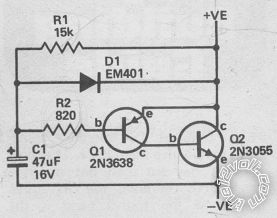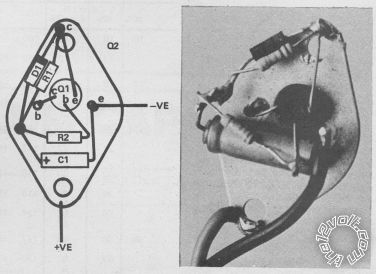Posted: May 21, 2010 at 6:57 AM / IP Logged
Posted: May 25, 2010 at 3:54 PM / IP Logged
Posted: May 25, 2010 at 8:33 PM / IP Logged
Posted: July 12, 2010 at 4:37 AM / IP Logged
Sorry, you can NOT post a reply.
This topic is closed.
 Printable version
Printable version


| You cannot post new topics in this forum You cannot reply to topics in this forum You cannot delete your posts in this forum You cannot edit your posts in this forum You cannot create polls in this forum You cannot vote in polls in this forum |

| Search the12volt.com |
Follow the12volt.com 
Tuesday, November 25, 2025 • Copyright © 1999-2025 the12volt.com, All Rights Reserved • Privacy Policy & Use of Cookies


Tuesday, November 25, 2025 • Copyright © 1999-2025 the12volt.com, All Rights Reserved • Privacy Policy & Use of Cookies
Disclaimer:
*All information on this site ( the12volt.com ) is provided "as is" without any warranty of any kind, either expressed or implied, including but not limited to fitness for a particular use. Any user assumes the entire risk as to the accuracy and use of this information. Please
verify all wire colors and diagrams before applying any information.










 And its birdsnest layout:
And its birdsnest layout:
 It is connected in parallel with the grounding door switch (ie "+VE" to switch & "-VE" to GND/chassis).
Be aware that the 2N3055 body is hot - both in terms of being +12V (but thru the dome/courtesy light) when the door switch is open, and also during operation depending on the load.
The circuit could be on the hot-side of the lamp provided the switch shorts out +VE & -VE (as in +ve chassis/GND vehicles).
When off, there should be no battery drain.
Operation:
The door switch closes (& turns the light on), C1 is discharged through D1. (REM - the door switch shorts the circuit's +VE to -VE)
The door is closed (door switch opens) & transistors Q1&Q2 are turned on.
C1 charges via R1 & R2 gradually turning off Q1 (which turns of Q2).
C1 is chosen for ~full brightness for ~4 seconds followed by ~10 seconds of dimming. But the timing depends on transistor gains and the load so different C1 values could be used.
Resistors are 1/2W. EM401 ca be IN4004 etc. C1 can be 25V etc.
The 2N3055 gets hot mainly when dimming. Depending on frequency of use & lamp load, a heatsink may be required. The 2N3055 handles up to 15A. (Someone else can do a di/dv & time integrate to determine max loads without heatsinking (Ptot=115W).)
Now to add a soft turn-on (for whoever wanted it....)
It is connected in parallel with the grounding door switch (ie "+VE" to switch & "-VE" to GND/chassis).
Be aware that the 2N3055 body is hot - both in terms of being +12V (but thru the dome/courtesy light) when the door switch is open, and also during operation depending on the load.
The circuit could be on the hot-side of the lamp provided the switch shorts out +VE & -VE (as in +ve chassis/GND vehicles).
When off, there should be no battery drain.
Operation:
The door switch closes (& turns the light on), C1 is discharged through D1. (REM - the door switch shorts the circuit's +VE to -VE)
The door is closed (door switch opens) & transistors Q1&Q2 are turned on.
C1 charges via R1 & R2 gradually turning off Q1 (which turns of Q2).
C1 is chosen for ~full brightness for ~4 seconds followed by ~10 seconds of dimming. But the timing depends on transistor gains and the load so different C1 values could be used.
Resistors are 1/2W. EM401 ca be IN4004 etc. C1 can be 25V etc.
The 2N3055 gets hot mainly when dimming. Depending on frequency of use & lamp load, a heatsink may be required. The 2N3055 handles up to 15A. (Someone else can do a di/dv & time integrate to determine max loads without heatsinking (Ptot=115W).)
Now to add a soft turn-on (for whoever wanted it....)